
Roots
Consider the quiet strength held within each strand, a testament to enduring wisdom passed down through generations. Our hair, particularly textured hair, carries stories, traditions, and an intrinsic connection to identity. It has been a canvas for cultural expression, a symbol of status, and a recipient of ancestral care for centuries.
As modern science progresses, a natural curiosity arises ❉ can the meticulous lens of today’s research validate the traditional hair care practices that have sustained healthy hair across time? This section begins a deep consideration of the hair’s fundamental architecture and how traditional methods have intuitively protected its delicate outer layer, the cuticle.

Hair Anatomy and Physiology Specific to Textured Hair
The very structure of textured hair sets it apart, demanding a nuanced understanding. Unlike straight hair, which typically possesses a more circular cross-section, textured hair often exhibits an elliptical or flat cross-sectional shape. This unique geometry leads to its characteristic coils and curls. Each strand emerges from a follicle, a tiny pocket within the scalp.
The visible portion, the hair shaft, is a complex biomaterial composed primarily of a protein called Keratin. This keratin is arranged in three main layers ❉ the medulla (the innermost core, not always present in finer hair), the cortex (the middle layer, responsible for strength, elasticity, and color from melanin), and the cuticle.
The Cuticle, the outermost layer, acts as the hair’s protective shield. It comprises several overlapping, scale-like cells, much like shingles on a roof. When these scales lie flat and smooth, they reflect light, contributing to a healthy sheen, and effectively seal in moisture, guarding the inner cortex from environmental aggressors and damage.
However, the very curvature of textured hair means these cuticle scales are not always uniformly flat, particularly at the bends and turns of each coil. This inherent characteristic can make textured hair more susceptible to cuticle lifting, moisture loss, and mechanical damage, highlighting the ancestral ingenuity behind protective traditional care.
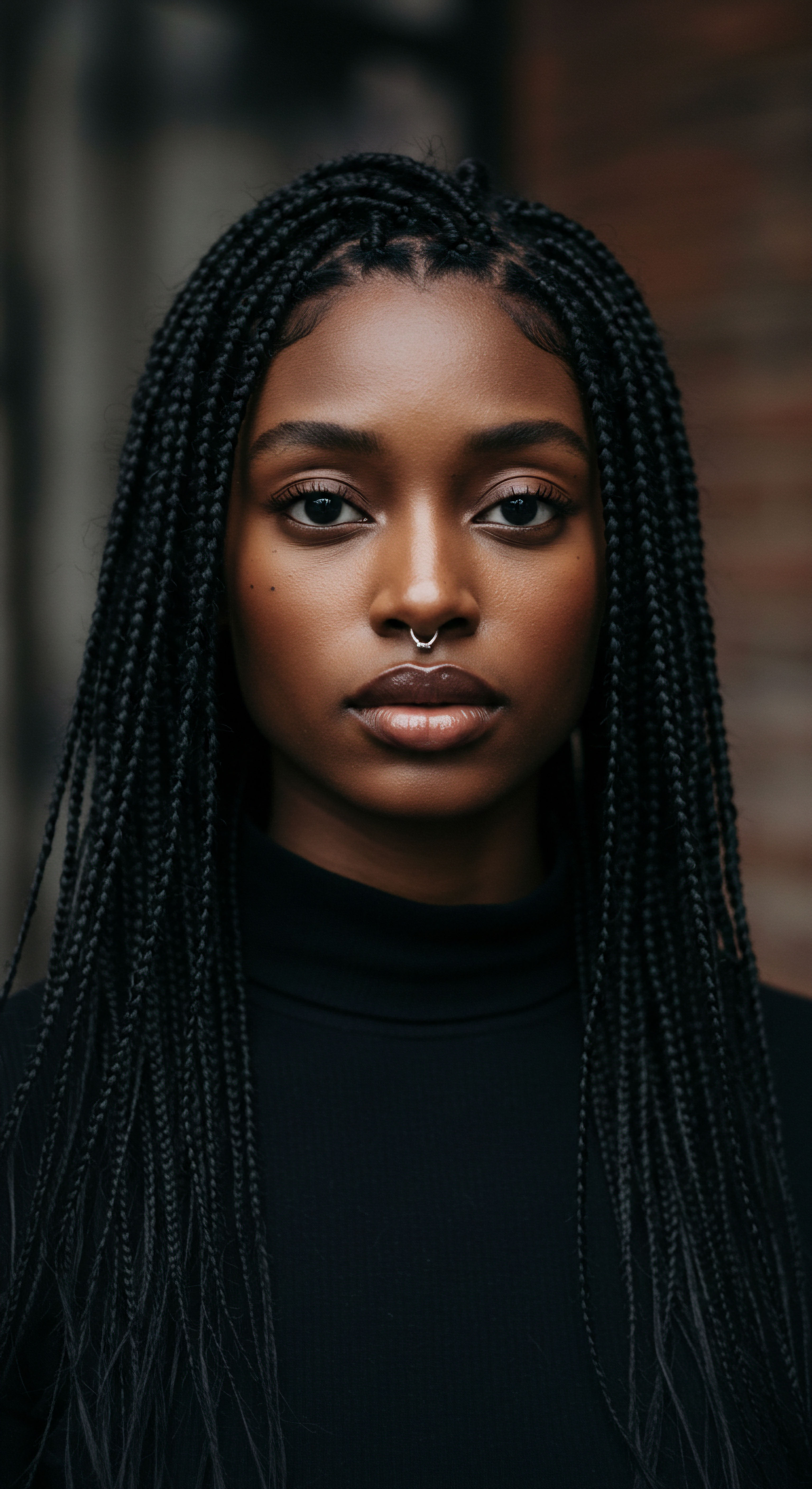
Textured Hair Classification Systems
Understanding the spectrum of textured hair involves more than a simple visual assessment. While popular classification systems, such as the Andre Walker Hair Typing System (often referenced with numbers and letters like 3A, 4C), offer a common language for describing curl patterns, a deeper scientific perspective acknowledges the underlying biological and structural variations. These systems attempt to categorize hair based on its curl pattern, ranging from wavy to tightly coiled.
However, it is essential to remember that these are broad descriptors. The true complexity lies in the microscopic differences in cuticle arrangement, lipid content, and protein distribution that contribute to each individual’s unique hair properties.
Hair’s intrinsic curvature means its cuticle scales are not uniformly flat, increasing susceptibility to damage.
For instance, African hair types are often noted for having a higher apolar lipid level compared to Asian and European hair, influencing water absorption and overall integrity. The density and distribution of cuticle layers can also vary, with some individuals possessing more layers than others. These scientific distinctions underscore why a generalized approach to hair care falls short and why traditional, culturally informed practices often provide tailored solutions.
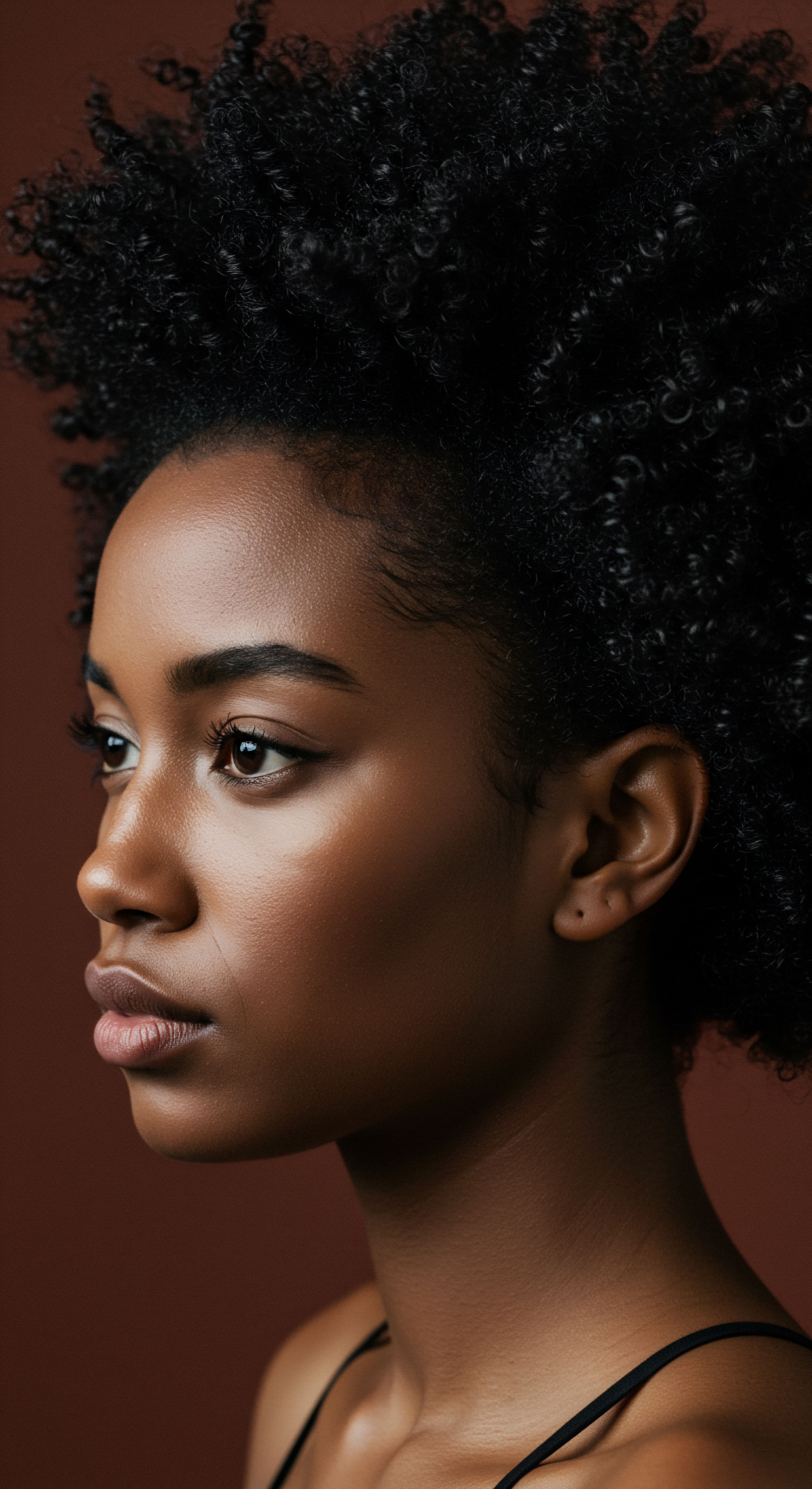
The Essential Lexicon of Textured Hair
To discuss textured hair with clarity and respect, a precise vocabulary becomes necessary. Beyond terms like “coily” or “kinky,” understanding the scientific descriptors provides a richer dialogue.
- Porosity ❉ This term refers to the hair’s ability to absorb and retain moisture. It is directly influenced by the state of the cuticle. When cuticles are raised, hair is high porosity and absorbs water quickly but loses it just as fast. When cuticles are tightly closed, hair is low porosity and resists water absorption but retains moisture well once hydrated.
- Elasticity ❉ This describes the hair’s ability to stretch and return to its original state without breaking. It is a sign of healthy protein bonds within the cortex, protected by an intact cuticle.
- Density ❉ This relates to the number of individual hair strands on the scalp. Higher density can mean more hair to manage, impacting product application and styling choices.
- Sealing ❉ A common practice, especially for textured hair, where emollients (like oils or butters) are applied after water-based products to flatten the cuticle and lock in moisture.
These terms allow for a more precise conversation about hair health, moving beyond anecdotal observations to a shared understanding rooted in hair science.

Hair Growth Cycles and Influencing Factors
Hair growth is not a continuous process but rather a cyclical one, occurring in distinct phases ❉ anagen (growth), catagen (regression), and telogen (resting/shedding). The duration of these phases varies among individuals and hair types. For textured hair, the tightly coiled structure can sometimes make shed hairs appear as breakage, leading to misinterpretations of hair health.
Many factors influence these cycles and overall hair vitality. Genetics certainly play a primary role, dictating curl pattern, density, and color. Beyond genetics, nutrition, hydration, stress levels, hormonal balance, and mechanical stress from styling practices all exert an influence. For instance, studies indicate that certain hair care practices, such as thermal or chemical straightening, braiding, or weaving, can cause various forms of alopecia in women of African descent.
Maintaining scalp health, a vibrant ecosystem of microorganisms, also plays a critical part in supporting healthy hair growth, as a disrupted scalp microbiome can lead to irritation and even impede hair growth. Traditional practices often intuitively addressed many of these influencing factors, long before modern science articulated their mechanisms.

Ritual
Step into a space where daily gestures transform into mindful practices, where the practical application of wisdom shapes the very vitality of our hair. This section shifts our consideration from the fundamental nature of hair to the deliberate actions we undertake in its care. For generations, traditional hair care has been a repository of practical knowledge, passed down not through scientific papers, but through lived experience and communal sharing.
Can modern scientific inquiry illuminate the underlying mechanisms of these rituals, validating their efficacy for cuticle health? We will explore how ancient techniques and natural ingredients, often considered simple, hold complex benefits that contemporary research is now beginning to appreciate.

Protective Styling Encyclopedia
Protective styles, deeply rooted in African and other global traditions, serve as a shield for textured hair. Styles like braids, twists, cornrows, and buns minimize manipulation, reduce exposure to environmental aggressors, and help retain length. This reduction in mechanical stress is particularly important for textured hair, which, due to its unique helical structure, can be more prone to breakage at its points of curvature.
From a scientific perspective, these styles safeguard the cuticle by limiting friction against clothing, pillows, and even other hair strands. Friction causes the cuticle scales to lift, leading to roughness, dullness, and eventual damage. By keeping the hair bundled and secured, protective styles maintain the cuticle’s integrity, thereby preserving moisture and strength. Research confirms that frequent braiding and combing can damage natural Afro hair, making protective styling a scientifically sound approach to preserving hair health.
Protective styles shield textured hair, minimizing manipulation and environmental exposure to safeguard the cuticle.
However, the method of application is paramount. Styles that are too tight can lead to traction alopecia, a form of hair loss caused by prolonged tension on the hair follicles. This highlights a delicate balance where traditional knowledge, emphasizing gentle handling and respect for the scalp, aligns with modern understanding of physical stress on the hair system.

Natural Styling and Definition Techniques
The quest for curl definition and vibrancy in textured hair has led to a rich array of natural styling techniques. Practices like finger coiling, wash-and-gos, and shingling rely on water and specific product application to clump curls and enhance their natural pattern. These methods often involve applying hydrating products to wet hair, allowing the hair to dry in its natural curl configuration.
The scientific benefit here lies in the interaction with the cuticle. When hair is wet, the cuticle swells and becomes more pliable. Applying emollients and humectants at this stage helps to smooth down the cuticle as the hair dries, locking in moisture and creating a more defined, less frizzy appearance.
Products containing ingredients like coconut oil, for instance, have been shown to penetrate the hair shaft, reducing protein loss and preventing hygral fatigue (damage from repeated swelling and shrinking due to water absorption). This ability of certain oils to penetrate and condition from within supports the efficacy of traditional practices that frequently utilize natural oils for styling and conditioning.
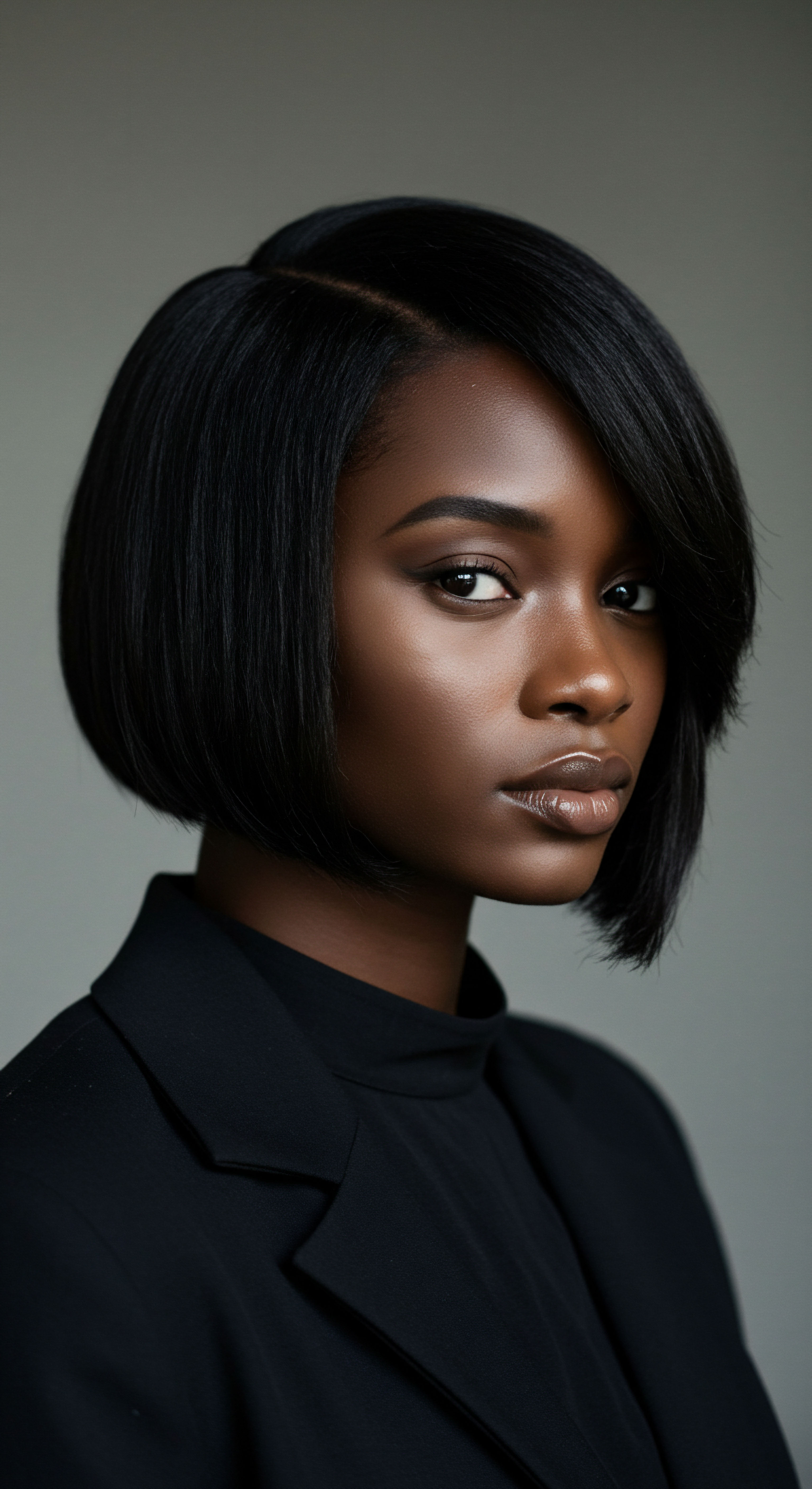
Wigs and Hair Extensions Mastery
Beyond aesthetic appeal, wigs and hair extensions, when used thoughtfully, can serve as a form of protective styling. Historically, hair adornments have held social and cultural significance, and in modern times, they also offer a means to shield natural hair from environmental elements, heat styling, and daily manipulation.
The scientific rationale for their protective capacity lies in the reduction of direct exposure to damaging agents. Excessive heat from styling tools can cause cuticle cracking and damage to the cortex. Environmental factors like harsh sun or strong winds can also contribute to cuticle lifting and dryness. By enclosing the natural hair, wigs and extensions mitigate these external stressors.
However, careful installation and removal are vital to prevent tension on the scalp and hair follicles, which can lead to mechanical damage or traction alopecia. The proper care of one’s own hair underneath these additions is equally important to maintain cuticle health.

Heat Styling and Thermal Reconditioning
The allure of altered textures through heat styling or chemical reconditioning is undeniable. Techniques like blow-drying, flat-ironing, and chemical relaxers have become commonplace. While they offer temporary or semi-permanent changes to hair texture, their impact on cuticle health requires careful consideration.
From a scientific standpoint, heat styling works by temporarily breaking the hydrogen bonds within the hair’s keratin structure, allowing the hair to be reshaped. Chemical relaxers, on the other hand, permanently alter the disulfide bonds in the hair cortex. Both processes, especially when performed improperly or excessively, can significantly compromise the cuticle.
High heat can cause the cuticle to lift, crack, and even chip away, leaving the inner cortex exposed and vulnerable to moisture loss and further damage. Chemical processes, particularly those with high pH levels, deliberately open the cuticle to allow agents to penetrate the cortex, which can weaken the cuticle if not properly sealed afterward.
A 2020 study comparing protective pre-treatments for African hair against repetitive grooming cycles, including thermal straightening, found that heat styling at temperatures above 200ºC can cause changes to the chemical composition of proteins in the cortex and cuticle cracking due to trapped water. This underscores the importance of a safety-first approach, emphasizing heat protectants, lower temperatures, and proper aftercare to help mitigate cuticle damage and maintain the hair’s integrity.
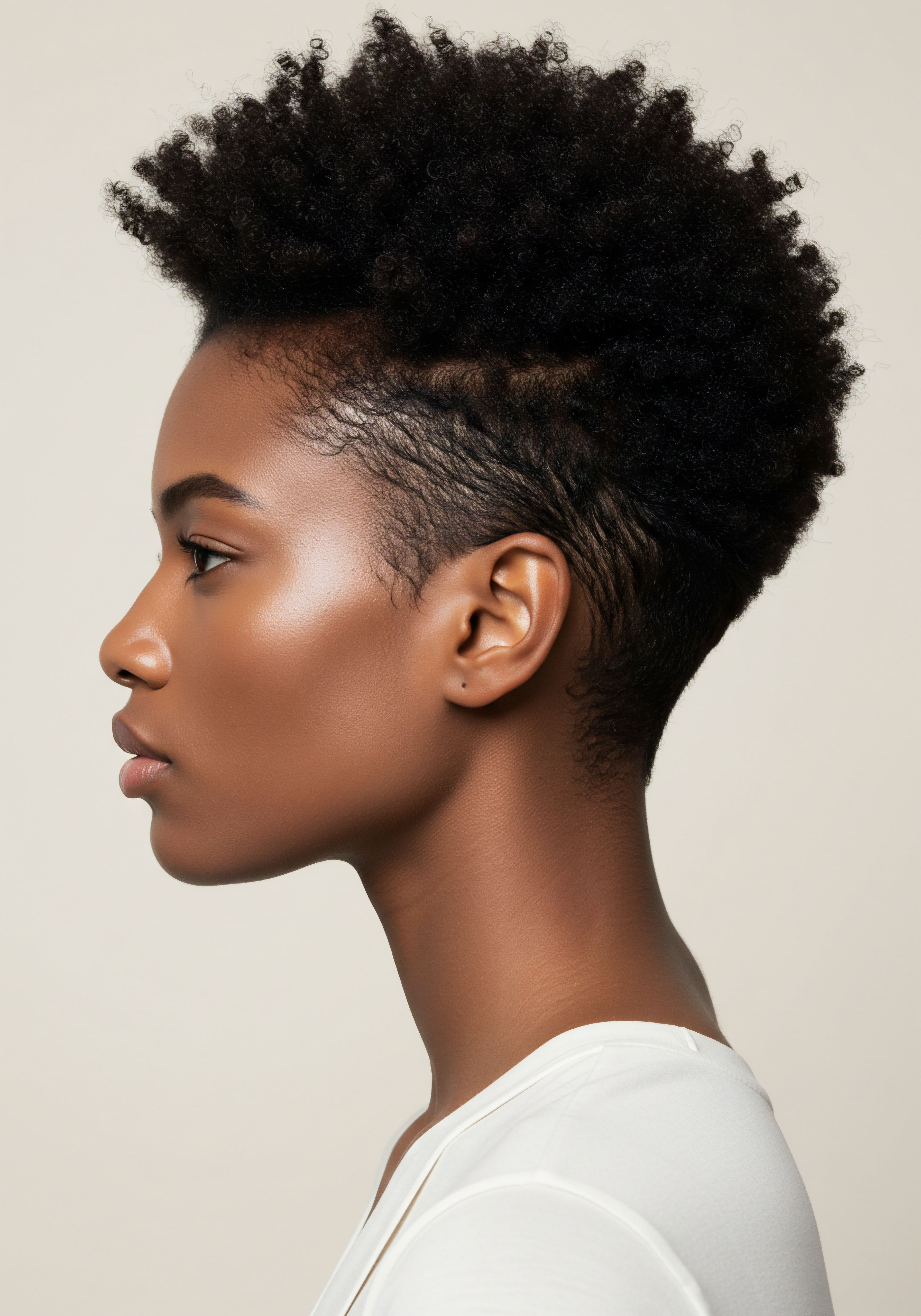
The Complete Textured Hair Toolkit
The selection of tools plays a significant role in preserving cuticle health, especially for textured hair. Traditional implements, often made from natural materials, were designed with the hair’s delicate nature in mind.
- Wide-Tooth Combs ❉ These are preferred for detangling wet or damp textured hair. The wider spacing reduces friction and snagging, minimizing mechanical stress on the cuticle.
- Soft Brushes ❉ Brushes with natural bristles or very flexible synthetic ones can help distribute natural oils from the scalp down the hair shaft, smoothing the cuticle and adding shine without causing undue friction.
- Satin or Silk Accessories ❉ Pillowcases, bonnets, and scarves made from satin or silk reduce friction between the hair and sleeping surfaces, preventing cuticle roughing and moisture loss. This is a simple yet profoundly effective traditional practice that science confirms helps preserve cuticle integrity.
The careful choice and gentle use of these tools are as significant as the products applied, working in concert to protect the hair’s outer layer and maintain its inherent beauty.

Relay
Let us consider the deeper currents that connect ancient practices with contemporary understanding. This section moves beyond practical applications to the convergence of cultural insight and rigorous scientific validation, seeking to answer the fundamental question ❉ can modern science truly validate traditional hair care for cuticle health? We will analyze how centuries of accumulated wisdom, often dismissed as anecdotal, find profound resonance in the molecular discoveries and empirical data of today. This exploration demands a thoughtful gaze, acknowledging the intricate interplay of biology, environment, and human experience.
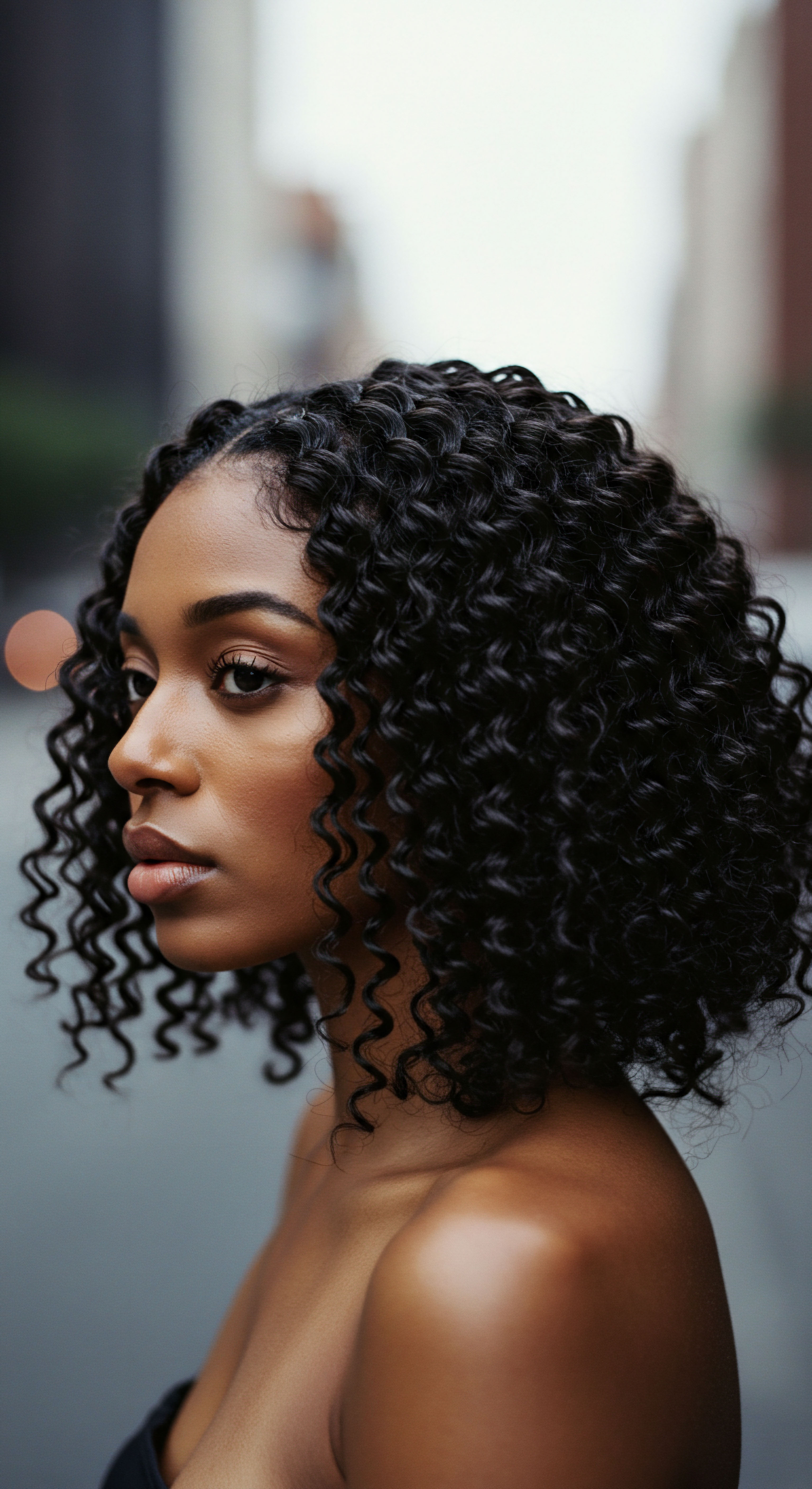
Bridging Ancient Wisdom and Molecular Science
The hair cuticle, that outermost protective layer, stands as a testament to the efficacy of traditional care. Ancient civilizations, without the aid of electron microscopes or chemical assays, intuitively understood the need to smooth, seal, and protect this delicate outer shell. From the rich oiling traditions of India, where coconut oil was a staple, to the plant-based rinses of ancient China and the protective styling practices across Africa, a common thread emerges ❉ a focus on maintaining the hair’s integrity.
Modern science now provides the molecular explanations for these age-old customs. For instance, the practice of oiling, particularly with certain natural oils, directly addresses cuticle health. Coconut oil, with its unique composition of lauric acid, possesses a low molecular weight and a linear structure, allowing it to penetrate the hair shaft more effectively than many other oils.
This penetration helps to reduce protein loss from both undamaged and damaged hair, a critical factor in maintaining cuticle and cortex integrity. This effect is not merely superficial; it helps to fill gaps within the hair’s structure, thereby reducing hygral fatigue – the damage caused by repeated swelling and shrinking of the hair fiber as it absorbs and releases water.
Traditional hair care, once seen as mere anecdote, now finds scientific backing in its intuitive protection of the hair cuticle.
Similarly, the historical use of acidic rinses, such as diluted vinegar or fermented rice water, finds its scientific basis in pH balance. Hair and scalp maintain a slightly acidic pH (around 4.5-5.5). When the hair cuticle is exposed to alkaline substances (like some harsh soaps or chemical treatments), it lifts and swells, making the hair porous and susceptible to damage.
Acidic rinses help to flatten and seal the cuticle, restoring the hair’s natural pH and enhancing shine and smoothness. The traditional use of fermented rice water, rich in inositol, further supports this, as inositol has been shown to repair damaged hair and protect it from harm by penetrating the hair shaft.

Does the Scalp Microbiome Connect Traditional and Modern Hair Care?
The intricate ecosystem of the scalp microbiome, a complex community of bacteria and fungi, has recently gained significant scientific attention for its influence on hair health. Traditional hair care practices, often involving natural ingredients like herbs, clays, and oils, implicitly interacted with this delicate balance, long before the term “microbiome” entered scientific discourse.
Many traditional methods emphasized gentle cleansing and the use of natural emollients, which would have avoided stripping the scalp’s natural oils and beneficial microorganisms, unlike some harsh modern shampoos containing sulfates. A balanced scalp microbiome is vital for protection against pathogens, regulation of inflammation, and support of healthy hair follicles. When this balance is disrupted, it can lead to irritation, dryness, and even contribute to hair loss.
Emerging research highlights a strong connection between a disrupted scalp microbiome and various forms of hair loss. A 2022 report published in the Journal of Investigative Dermatology, for instance, found that individuals experiencing hair thinning exhibited a significant imbalance in their scalp microbiota compared to those with healthy hair. Furthermore, a 2021 clinical trial in Experimental Dermatology observed that 73% of alopecia patients showed decreased levels of beneficial bacteria like Cutibacterium acnes, alongside an increase in harmful yeasts such as Malassezia restricta. This suggests that traditional practices that naturally supported a healthy scalp environment, perhaps through gentle massage, herbal infusions, or mild cleansers, were, in effect, nurturing the scalp microbiome, thereby contributing to overall hair health and cuticle integrity from the root outward.

Unconventional Data ❉ The Case of Abyssinian Seed Oil
While coconut oil receives considerable attention for its hair benefits, research into other natural oils offers equally compelling, if less commonly discussed, data. A 2020 study on African hair, specifically focusing on the protective effects of natural oils and silicones, revealed interesting findings regarding Abyssinian seed oil (ASO).
The study, published in UAL Research Online, investigated the impact of ASO and Babassu oil, alongside silicone polymers, on African hair subjected to repetitive grooming cycles, including thermal straightening and solar radiation. While wet tensile stress testing showed silicones reduced the force needed for hair extension, natural oils did not exhibit a significant effect in this specific measure. However, a critical finding from dry torsional tests indicated that Abyssinian Seed Oil Softened the Hair Cuticle. This suggests that ASO can increase cuticle softness, which, over an extended period, would contribute to maintaining the fiber’s manageability and reducing breakage – conditions vital for keeping African hair in good condition.
This softening effect on the cuticle, distinct from the tensile strength benefits often associated with silicones, points to a unique mechanism by which traditional or natural oil applications can benefit textured hair, directly impacting the tactile quality and flexibility of the cuticle layer. This challenges the notion that only synthetic polymers offer superior protection, presenting a more nuanced view of natural ingredients’ contributions.
| Oil Type Coconut Oil |
| Key Properties / Mechanism Low molecular weight, high affinity for hair protein, rich in lauric acid. |
| Cuticle Impact Penetrates hair shaft, reduces protein loss, mitigates hygral fatigue, maintains cuticle integrity. |
| Oil Type Abyssinian Seed Oil |
| Key Properties / Mechanism Rich in C22 unsaturated fatty acid triglycerides. |
| Cuticle Impact Softens hair cuticle, improves manageability, contributes to reduced breakage over time. |
| Oil Type Mineral Oil |
| Key Properties / Mechanism Hydrocarbon, non-polar, does not significantly penetrate hair shaft. |
| Cuticle Impact Forms surface film, less effective in reducing protein loss or deeper conditioning. |
| Oil Type This table highlights distinct mechanisms by which various oils interact with the hair cuticle, offering diverse benefits. |

Cultural Significance of Hair Care Practices
Beyond the biophysical aspects, the cultural dimensions of hair care practices are inseparable from their perceived efficacy and continuity. For many communities, particularly those with textured hair, hair care rituals are not merely about aesthetics; they are acts of identity, resistance, and connection to heritage.
These practices often involve communal grooming, storytelling, and the passing down of knowledge from elder to youth. The tactile experience of oiling, braiding, or coiling hair can be a deeply grounding activity, fostering a sense of self-acceptance and pride. While modern science can dissect the molecular benefits of a specific oil or technique, it is the cultural context that provides the framework for consistent application and generational adherence.
The value placed on healthy, well-maintained hair within these cultures inherently drove the development and refinement of methods that, by happy coincidence, align with scientific principles of cuticle protection. This intergenerational transmission of practical wisdom, often rooted in available natural resources, has created a living laboratory of hair care that modern research is only now beginning to fully appreciate and validate.

Reflection
The journey through the intricate world of hair, from its microscopic structure to its deep cultural roots, reveals a compelling truth ❉ the validation of traditional hair care by modern science is not a simple affirmation, but a beautiful, ongoing dialogue. It is a recognition that wisdom, honed over centuries of lived experience and observation, often anticipated the precise molecular mechanisms that laboratories now identify. The quiet strength of ancient rituals, once seen as mere folklore, now stands alongside empirical data, proving their profound efficacy in maintaining the hair’s outer shield, the cuticle. As we continue to seek understanding, the delicate balance between ancestral knowledge and scientific inquiry promises a richer, more respectful approach to hair health, one that honors both heritage and innovation.

References
- Abyssinian Seed Oil in Hair Care. UAL Research Online, 2020.
- Adewole, S. O. et al. The Genomic Variation in Textured Hair ❉ Implications in Developing a Holistic Hair Care Routine. MDPI, 2023.
- The National Museum of American History. Hair Care. Smithsonian Institution.
- MONPURE. Why the Scalp Microbiome is the Key to Healthy Hair. MONPURE, 2023.
- KOVI HAIR. The Science of Hair ❉ Understanding Hair Structure, Type, and Textures. KOVI HAIR, 2023.
- Centre Clauderer. Hair PH ❉ Why is it important for hair health? Centre Clauderer.
- Atlas Scientific. Why the pH of Your Hair Products Matter. Atlas Scientific, 2024.
- K18 Hair PRO. Everything You Need to Know About pH + Hair. K18 Hair PRO.
- Laifen-EU. What is the Hair Cuticle? Structure, Causes of Damage & Repair Tips. Laifen-EU, 2024.
- isRiel Handmade. Why the pH of Your Hair Products Matter. isRiel Handmade, 2024.
- Kera Mane. Understanding the pH of Keratin Treatments ❉ How pH Levels Impact Your. Kera Mane, 2024.
- Rele, J. S. & Mohile, R. B. Benefit of Coconut‐Based Hair Oil via Hair Porosity Quantification. ResearchGate, 2024.
- Gavazzoni Dias, M. F. R. Hair Oils ❉ Indigenous Knowledge Revisited. PMC, 2015.
- BC Open Textbooks. Trichology – The Science of Hair – Hair Colour for Hairstylists. BC Open Textbooks.
- Hairy Truths. Layers, We All Have Them. Hairy Truths.
- Kalichem. Postbiotics for Hair and Scalp Microbiome Balance. Kalichem.
- Keis, K. et al. Investigation of Penetration Abilities of Various Oils into Human Hair Fibers. Olive Oil Times.
- estherotomi. BLACK HAIR SCIENCE ❉ THE STRUCTURE OF AFRO TEXTURED HAIR. estherotomi, 2015.
- Reddit. Hair care science for Afro Hair. Reddit, 2025.
- The Historical Significance of Rice Water Shampoo ❉ A Cultural and Scie. 2023.
- National Institute. The Scalp Microbiome ❉ How New Hair Loss Treatments Target Bacterial Imbalance. National Institute, 2025.
- Lau, H. The Legacy of Lathers ❉ Tracing the Historical Use of Natural Ingredients in Hair Cleansing. 2023.
- Vijay. Scalp Microbiome Explained ❉ What’s Living on Your Scalp and Why It Matters. 2025.
- Beauty Blog. Gentle Hair Care ❉ Discover Our Ammonia-Free Products for Healthier Hair. Beauty Blog, 2024.
- OilCocos. Coconut Oil’s Influence on Hair Protein Structure. OilCocos, 2024.
- Unlocking the Science of Afro Hair Growth ❉ Proven Methods & Natural Remedies! 2023.
- OBLOOM – Truu by Nature. OILS THAT PENETRATE VS. OILS THAT SEAL THE HAIR. OBLOOM – Truu by Nature, 2024.
- Reddit. Good Hair Oils for Penetration and Sealing? Reddit, 2023.
- ResearchGate. Grades of Cuticle Layer Damage Assessed by TEM. ResearchGate.
- ResearchGate. Comparing Protective Pre-treatments for African Hair. ResearchGate, 2020.
- ResearchGate. African Hair ❉ Exploring the Protective Effects of Natural Oils and Silicones. ResearchGate.
- National Institute. The Evolution of Hair & Scalp Treatments ❉ Hair Care History. National Institute, 2023.
- Clinical and in Vitro Studies. New Topicals to Support a Healthy Scalp While Preserving the Microbiome ❉ A Report of.
- Amazingy Magazine. A History of Haircare. Amazingy Magazine, 2024.
- Hair Care. A Study on Scalp Hair Health and Hair Care Practices among Malaysian Medical Students.
- Richena, R. & Rezende, M. Comparison on Quality Performance of Human Hair Types with Herbal Oils (Grape Seed/Safflower Seed/Rosehip) by Analysis Techniques. PMC, 2023.
- Kumar, M. et al. Comparative Study of Knowledge, Attitude, and Practices of Hair Care among the Final Year MBBS Students versus Final Year Engineering Students. 2020.
- Rele, J. S. & Mohile, R. B. Effect of Mineral Oil, Sunflower Oil, and Coconut Oil on Prevention of Hair Damage. ResearchGate.
- Harvard Journal of Law & Gender. It’s Not Just Hair ❉ Historical and Cultural Considerations for an Emerging Technology. 2015.
- El-Demerdash, A. History of Natural Ingredients in Cosmetics. MDPI.
- Sherrow, V. Encyclopedia of Hair ❉ A Cultural History. ResearchGate.
- On Hair Care Physicochemistry ❉ From Structure and Degradation to Novel Biobased Conditioning Agents. MDPI.
- Verma, S. Exploring Cultural Significance of Hair. Daily Excelsior, 2025.
- Nojek, P. et al. Hair Loss Therapies ❉ A Review and Comparison of Traditional and Modern Treatment Methods. 2024.
- Nkengne, A. et al. Quantifying the Impact of Braiding and Combing on the Integrity of Natural African Hair. 2021.
- Williams, R. S. et al. Historical Perspectives on Hair Care and Common Styling Practices in Black Women. 2025.